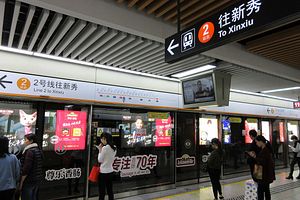China’s latest subway building boom will cost an estimated $234.6 billion by 2020, according to the World Resources Insitute (WRI), and without new ideas, this splurge will recreate the mistakes of the past and saddle local governments with more debt.
China is in the process of doubling subway capacity. In early 2016, China had 3,195.6 kilometers of lines nationwide, and it had another 3,266 km of new lines under construction in early 2017, with a further 552 km to be started by the end of this year, according to research by IRJpro.com, a rail infrastructure data firm.
With an extra 100 million urban residents expected by 2020 and McKinsey forecasting 1 billion urban residents by 2030, it makes sense to build the capacity now. But the estimated $236.4 billion cost is a huge burden to bear, particularly for China’s local governments.
Local governments largely foot the bill because private companies are loath to get involved in subway development given high development costs, government price controls that limit ticketing revenue, and long project payback periods.
The costs of subway development mainly stem from three channels: investment to build the projects, debt repayments on older lines, and subsidies to meet the shortfall between operational costs and ticket revenue. WRI puts the cost of the three categories at $7.14 billion annually in Beijing alone.
Local governments borrow heavily to fund the projects, either individually or through local government financing vehicles, and WRI estimates that up to 80 percent of funding comes through debt, which could add an extra $190 billion to China’s debt pile.
This prospect smacks of past failure, particularly the investment binge triggered by China’s stimulus in the wake of the 2008 global financial crisis.
That splurge, itself driven by local debt financing, added an extra RMB 2.1 trillion ($304 billion) to local government’s debt piles, and ballooned overall debt to three times local government fiscal revenue in 2014, according to Xun Wu, an MIT researcher.
But in looking to avoid making the mistakes of the past, the Chinese government could demonstrate its commitment moving away from debt-fueled growth by opening up these projects to private investment.
One such way to do this with subway expansion is to adopt Hong Kong’s “rail and property” (R&P) model. In the R&P model, local governments raise revenue by selling land development rights at specially-set, pre-development prices to subway development firms.
These firms then fund station development and management but make back their money by working with developers to build residential and commercial units in the area that generate sales and rental income to pay for the project cost as well as operations and maintenance.
These models have been successfully applied in Hong Kong over many years. Shenzhen has adapted and developed R&P projects of its own during the past ten years and has been so successful that its subway network is now being expanded to be the largest in the world by 2030.
One drawback getting in the way of nationwide rollout is that R&P projects require local governments to sell or award land plots to their project partners at discounted prices or as part of a structured, installment-based transaction.
Current land law in China, however, requires all land to go through public auctions and payments to be made upfront, which means both the initial and total cost of taking on the land can be too expensive for the private sector, according to WRI.
And adopting R&P models are further complicated by the fact that local governments are often hell-bent on splurging public money on building the infrastructure to meet ambitious targets, rather than taking time to engage town planners and the private sector to devise commercially viable projects that could reduce the need for excessive government spending.
Despite these drawbacks, the existence of alternative models such as R&P, which itself has been successfully trialed in Shenzhen, offers China a way to deliver the kinds of reform that are necessary to open opportunities for the private sector and demonstrate that it is moving decisively away from its debt-fueled growth model. In future posts, I’ll be looking in more detail about how successful China is being in following a reform agenda.

































